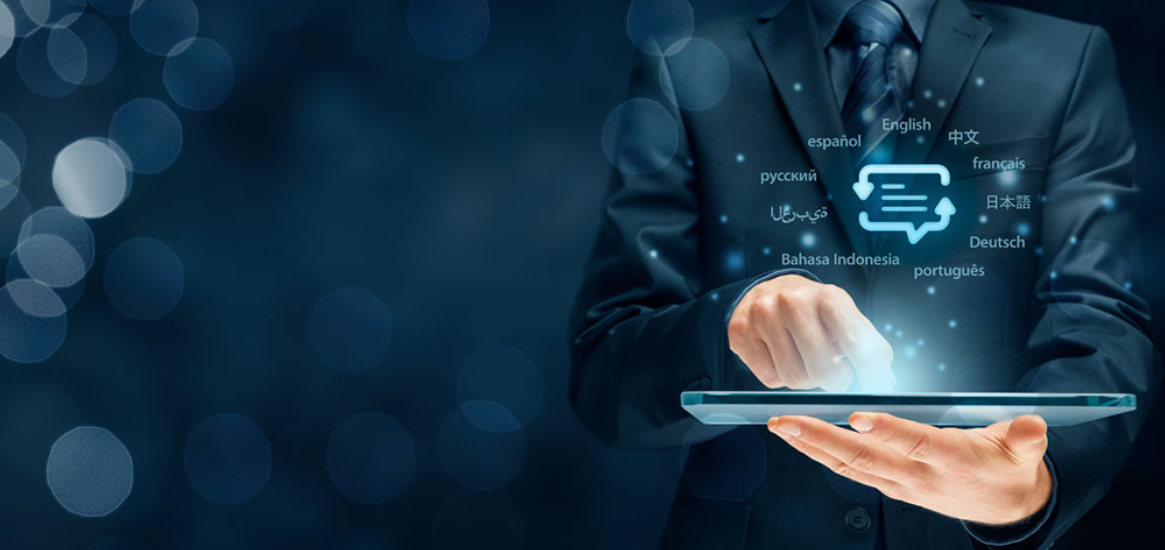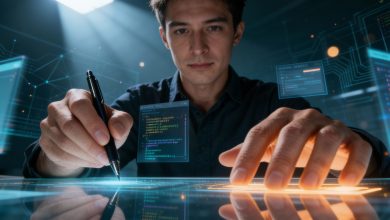
Imagine navigating a bustling foreign city without knowing the local language, or conducting business with international partners when you can’t speak their language. Frustrating, right? In our increasingly interconnected world, the need for seamless communication across languages has never been more critical.
Whether you’re a business professional, a frequent traveler, or someone who loves connecting with people from different cultures, overcoming language barriers is a constant challenge. Traditional translation methods have served us well but often lack the speed and nuance needed for real-time interactions.
That’s where Artificial Intelligence (AI) steps in, revolutionizing language translation services and making cross-language communication more accurate and efficient than ever before. Let’s dive into how AI is changing the game and what the future holds for breaking down these linguistic walls.
Evolution of Language Translation
Translation has a rich history, dating back to ancient civilizations where bilingual scribes played a crucial role in diplomacy and trade. These early methods relied heavily on human translators who were proficient in multiple languages.
The advent of computers in the mid-20th century introduced the possibility of machine translation. Early attempts, such as the Georgetown-IBM experiment in 1954, laid the groundwork for future developments. However, these initial efforts were limited by the technology of the time, often resulting in awkward and inaccurate translations. This was particularly true for less common languages, such as those requiring Pashto language translation services.
The late 20th century saw the emergence of statistical machine translation (SMT). This method used vast amounts of bilingual text to generate translations based on probability. While a significant improvement over earlier methods, SMT still struggled with contextual understanding and idiomatic expressions.
The Role of AI in Modern Translation Services
The inception of Neural Machine Translation (NMT) was a very important development. The model sentences end-to-end using deep learning methods instead of words or phrases. So this perfects more accurate and contextually appropriate translations. Much like AI language learning, which helps machines understand and generate human-like text through exposure to vast multilingual datasets, NMT systems continuously improve by learning from massive amounts of translated content.
Benefits of NMT
- Improved Accuracy: NMT systems can understand and generate more accurate translations by considering the context of entire sentences.
- Contextual Understanding: These systems can handle idiomatic expressions and cultural nuances better than their predecessors.
- Continuous Learning: NMT models improve over time as they are exposed to more data, leading to progressively better translations.
AI-Driven Translation Services: Key Players and Technologies
Google Translate
Google Translate stands out as one of the most known AI-driven translation services. Working on advanced NMT, it covers more than 100 languages and offers real-time translation through various modes like text, voice, and image translation.
Microsoft Translator
Microsoft Translator also leverages NMT to offer robust translation services. Integrated with other Microsoft products, it enables seamless translation in real-time during conversations and presentations.
DeepL Translator
DeepL’s high-quality translations have greatly made a reputation. DeepL is specifically designed for language translation by using a neural network architecture that offers translations that are often more accurate and fluent than the competitors’.
Impact of AI on Language Translation
Enhancing Global Communication
Through the use of AI-powered translation services, there has been an improvement in communication abilities in different languages. Now, businesses can interact with global companies more effectively and an individual can easily talk to different people of different linguistic backgrounds.
Breaking Down Language Barriers in Real-Time
Real-time translation is one of the thrilling applications of AI in translation. For instance, AI technologies such as Google Translate real-time voice translation and Microsoft live captioning allow for immediate comprehension hence enhancing inclusivity during international conferences and meetings.
Cultural Sensitivity and Localization
AI has also improved the cultural sensitivity of translations. By understanding context and cultural nuances, AI-driven systems can produce translations that are more culturally appropriate, enhancing the overall communication experience.
Localization of Digital Products & Apps
As translation efforts continue to mature, app localization and localization of digital products have become a priority. Your users want to feel at home with every element of the interface in their own language, and more importantly, for it to feel natural. Localization platforms like Tolgee enable teams to directly use translation as part of their workflow and provide a means to maintain consistent translations, as well as cultural contexts, across many translations.
Challenges and Limitations of AI in Translation
Contextual Understanding
While AI has made significant strides, it still struggles with certain contextual nuances. Understanding sarcasm, humor, and other subtle aspects of language remains a challenge for AI systems.
Data Privacy Concerns
The use of AI in translation raises important questions about data privacy. As these systems often require large amounts of data to function effectively, ensuring the privacy and security of this data is paramount.
Dependence on High-Quality Data
AI translation models rely heavily on the quality of the data they are trained on. Inadequate or biased data can lead to inaccurate translations, highlighting the need for continuous improvement and monitoring of training datasets.
Ethical Considerations in AI Translation
Addressing Bias
AI translation systems can inadvertently perpetuate biases present in their training data. It’s crucial to develop methods for identifying and mitigating these biases to ensure fair and accurate translations.
Ensuring Accessibility
As AI translation services become more prevalent, it’s important to ensure they are accessible to all, including people with disabilities. This includes developing user-friendly interfaces and providing support for various languages and dialects.
Transparency and Accountability
Transparency in how AI translation systems operate and accountability for their outputs are essential. Users should be informed about the limitations of these systems and have recourse in cases of significant translation errors.
Future of AI in Language Translation
The future of AI in translation looks promising, with continuous advancements in deep learning and natural language processing (NLP). These technologies will enable even more accurate and context-aware translations. Future translation services will likely incorporate multimodal translation capabilities, combining text, voice, and visual inputs to provide more comprehensive translation services.
This will further enhance real-time communication and user experience. AI advancements will also enable more personalized translation services. By understanding user preferences and communication styles, AI systems can tailor translations to suit individual needs, improving the overall effectiveness of communication.
Frequently Asked Questions
- What languages are supported by AI translation services?
AI translation services support a wide range of languages, often exceeding 100. The availability of languages depends on the specific service provider. Popular services like Google Translate and Microsoft Translator support numerous languages, including many less commonly spoken ones.
- How accurate are AI translation services compared to human translators?
While AI translation services have significantly improved in accuracy and contextual understanding, they may still struggle with certain nuances, idiomatic expressions, and cultural references. Human translators excel in these areas due to their deeper understanding of context and cultural subtleties.
- Can AI translation services handle real-time translation?
Yes, many AI translation services, such as Google Translate and Microsoft Translator, offer real-time translation capabilities. These services can translate spoken language on the fly, making them useful for live conversations, meetings, and travel.
- Are AI translation services secure and private?
Data privacy is a crucial concern for AI translation services. Reputable providers implement stringent security measures to protect user data. However, users should always review privacy policies and understand how their data is being used and stored.





